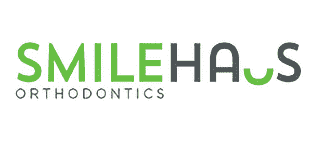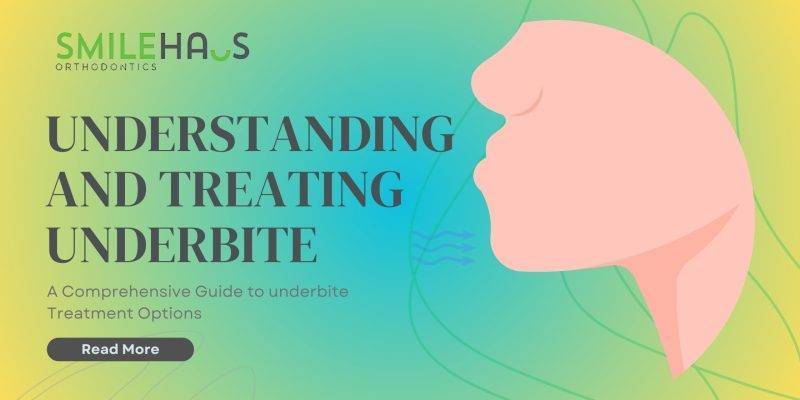Underbite, medically known as Class III malocclusion, is more than just a cosmetic concern. This dental and/or skeletal, where the lower teeth extend beyond the upper teeth, can significantly impact oral health, speech, and facial appearance. Understanding underbite, its causes, and treatment options is crucial for those affected and for promoting general oral health awareness.
Causes of Underbite
– Genetic Factors: Often, underbite is a hereditary condition. If parents or close family members have an underbite, their children will likely develop the same condition.
– Childhood Habits: Prolonged habits like thumb-sucking, excessive use of pacifiers, and bottle-feeding can lead to developmental issues in the jaw and teeth, resulting in an underbite.
– Jaw Misalignment: At times, underbite is due to misaligned jaw growth, where the lower jaw develops more rapidly or is positioned ahead of the upper jaw.
Effects of Untreated Underbite
Leaving an underbite untreated can lead to a host of problems:
– Dental Issues: An underbite can cause uneven wear on the teeth, leading to tooth decay and periodontal diseases.
– Speech Problems: It might affect speech, leading to difficulties in articulation and clarity.
– Facial Asymmetry: Over time, an untreated underbite can alter the shape of the face, resulting in asymmetry and potential self-esteem issues.
– Eating difficulties
– Chronic jaw or joint (TMJ) pain, as well as headaches and earaches
– Sleep apnea, snoring, and other nighttime breathing difficulties
– Low self-esteem
Underbite Treatment Options
Braces: A Common Solution for Underbite Alignment
Braces are a prevalent method for correcting underbites, catering to various age groups. They come in different types, such as metal, clear, or ‘hidden’ braces, and are often considered the most cost-effective and efficient solution. Typically, braces need to be worn for two to three years, followed by a retainer to maintain the alignment.
Reverse-Pull Face Mask for Children
The Reverse-Pull Face Mask is specifically designed for children under 10 years, targeting the alignment of the upper jaw. It involves a mask-like device that wraps around the head. The mask is most effective when worn at least 12 hours/day to achieve an orthopedic effect.
Upper Expansion with Self-ligating Braces
Historically, an Upper Jaw Expander is a device fitted across the palate, usually for a duration of about a year. It involves nightly adjustments using a special key to gradually widen the upper jaw, ensuring the lower teeth do not close against the uppers. Today, in most cases, I can achieve the expansion needed with self-ligating braces, the natural pressure from the tongue, and special archwires.
Alternative Methods for Underbite Correction
Tooth Extraction: Addressing Overcrowding
In cases where overcrowding of the lower teeth leads to an underbite, tooth extraction might be a viable solution. This can be a standalone procedure or combined with other corrective methods.
Surgical Approaches to Severe Underbites
Orthognathic Jaw Surgery
This surgical method involves repositioning the lower jawbone to correct a protruding jaw. It requires a separation of the bone in the rear part of the jaw from the front, allowing the lower teeth to be repositioned. The recovery period can range from one to three weeks for returning to work or school, with complete healing taking 9 to 12 months.
Le Fort III Osteotomy
A more comprehensive surgical approach, Le Fort III Osteotomy, is used when the entire face appears recessed above the lower jaw. This procedure involves moving the entire face forward, significantly altering appearance and functionality.
Temporary Anchorage Devices (TADs)
TADs are like mini-implants that are placed in strategic areas. In most cases, the lower jaw is moved back to correct the position of the jaw. This can be a great alternative to orthognathic surgery.
Cosmetic Dentistry: A Non-Surgical Option
In milder cases, cosmetic dentistry may offer a solution by reshaping the lower teeth and fitting veneers to the upper teeth. While this doesn’t correct the underbite structurally, it improves its visibility and enhances jaw functionality.
Seeking Professional Help
Consulting an orthodontist is vital for anyone with an underbite. They act as the quarterback in your case and work with other providers to achieve the best result in your case. Treatment plans are highly individualized, considering the severity of the underbite, patient age, and personal preferences. The study by McIlvaine et al. (2014) highlights the complexity of treatment choices, emphasizing the importance of professional guidance. The study assessed the feasibility of randomizing surgical versus non-surgical treatments for Class III malocclusion in cleft lip and palate patients. It found that most parents and patients were unwilling to accept random treatment assignments, with a significant portion likely to drop out if dissatisfied with the treatment. This highlights the challenges of conducting randomized trials in surgical settings and suggests the need for alternative research models.
Conclusion
Early diagnosis and appropriate treatment of underbite are imperative. A range of treatment options, from braces to surgery, can effectively manage each case. Consulting with us at SmileHaus Orthodontics ensures a treatment plan tailored to individual needs, promoting better oral health and overall well-being.
Q&A Section
Q1: At what age is it best to start underbite correction?
A1: All children should be seen by an orthodontist by age 7. If necessary, underbite braces correction can begin at that time, especially for methods using the Reverse-Pull Face Mask, which is more effective during growth.
Q2: Can braces alone correct an underbite?
A2: Depends on each case. Braces for underbite is a standard solution for underbites and can be effective independently, especially when underbites are less severe. Your orthodontist may also be able to correct the bite with aligners (like Invisalign).
Q3: What are the recovery times for underbite corrective surgeries?
A3: Recovery times vary. Orthognathic Jaw Surgery takes 1-3 weeks to return to normal activities and 9-12 months for complete healing. Le Fort III Osteotomy follows typical surgery healing times.

